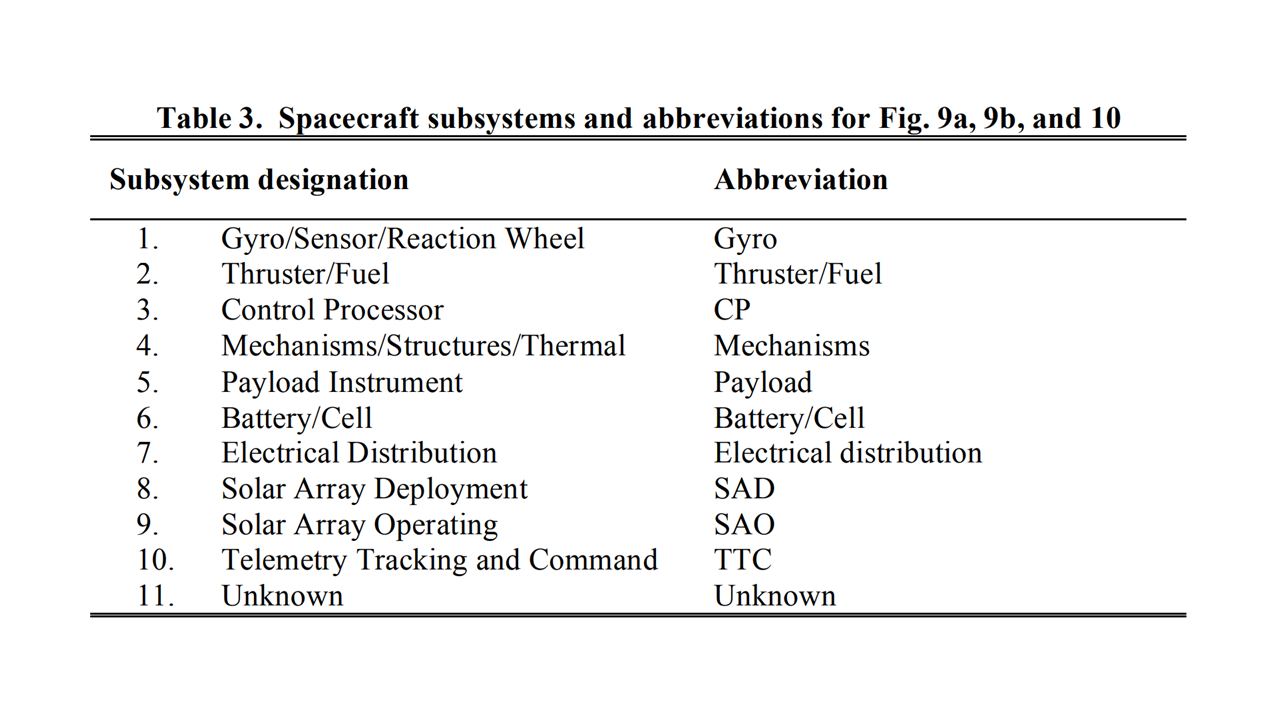Satellite Failure Modes
Satellites don't last forever. Most are retired as planned. Like some of us, others are pressed to continue working many more years. An unfortunate few, less than 1 in 10 (see https://virtussolis.space/blog/satellite-reliability ), fail before their time.
Space is a harsh environment in many ways. Fixing a satellite in orbit is tough today. So, when a failure happens, the satellite is usually taken out of service as gracefully as possible. Depending on the age of the satellite, the reasons for the failures changes. Some things are likely to fail when the satellite is first brought to life. Others dominate as the satellite ages.
An older paper by Castet and Saleh has a nice breakdown of how failures progress as a satellite ages.
The graphs tell the story that early in a satellite's life, the primary reasons for failure are related to bringing it to life. When the solar arrays, thrusters and gyros first start operation after being shaken in launch and thermal cycles by 100's of degrees, things go wrong. Towards planned retirement, batteries, telemetry, tracking,controll dominate the failures.
Because space based solar power (SBSP) satellite are huge, there is concern about reliability. However, satellites tend to become more reliable size. Furthermore, there are huge opportunities to improve reliability significantly over historical patterns. Significant differences from existing satellites include massive system parallelization, different ratios of subsystems, and manufacturing assembly hardware that can act as service equipment for in-orbit repair. All of this should make SBSP satellites one of the most reliable and durable satellites every built.
Sources: Castet, J., & Saleh, J.H. (2009). Satellite Reliability: Statistical Data Analysis and Modeling.




